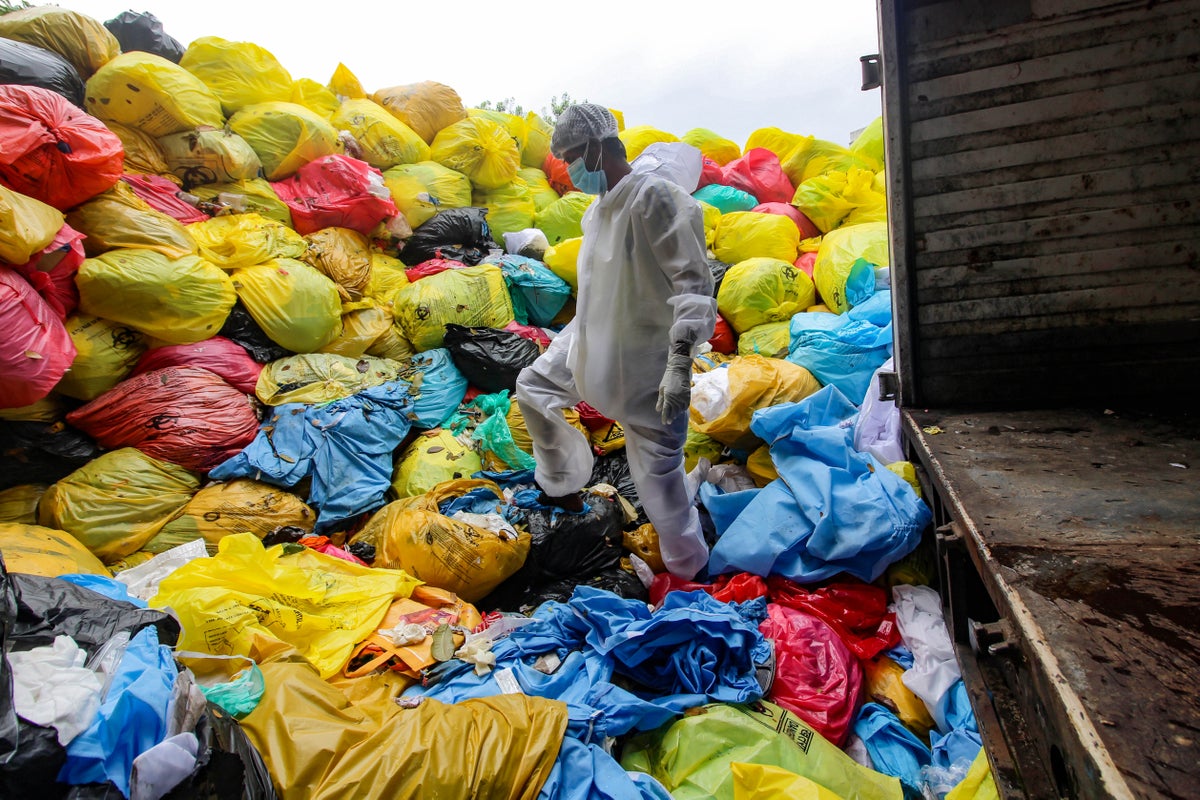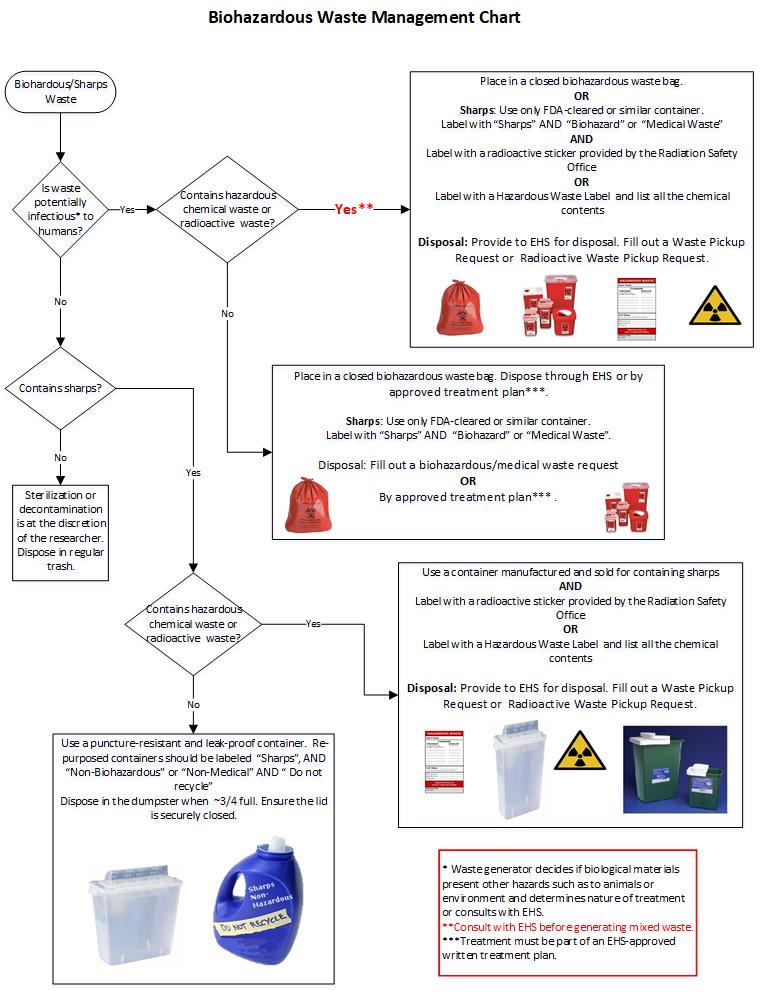Tailored Medical Waste Disposal Service: Fulfilling Health Care Compliance Requirements
Wiki Article
Compliance and Rules for Medical Garbage Disposal
Conformity and regulations for medical waste disposal play a critical role in ensuring the security and well-being of both health care experts and the basic public. Proper monitoring of clinical waste is crucial to avoid the spread of infections, secure the setting, and maintain public wellness. These policies include different facets, consisting of the classification and partition of clinical waste, correct storage and handling treatments, as well as transportation and disposal approaches.Relevance of Compliance
The value of compliance with regulations for clinical waste disposal can not be overemphasized. Proper disposal of medical waste is important for making certain the security and well-being of health care workers, individuals, and the public. Clinical waste, which consists of items such as used needles, infected handwear covers, and biomedical waste, can present major health and wellness dangers if not dealt with and thrown away correctly.Conformity with laws makes sure that clinical waste is managed in a method that lessens the possibility for exposure to hazardous materials and transmittable illness - medical waste disposal. It assists prevent the spread of infections, such as HIV, liver disease B and C, and various other bloodborne microorganisms. Conformity likewise plays an essential role in protecting the environment by stopping contamination of water resources, soil, and air
Failure to adhere to policies can cause serious consequences for medical care facilities, consisting of penalties, lawful action, and damages to their online reputation. In addition, non-compliance may compromise the health and wellness and security of healthcare employees, individuals, and the area.
Compliance with laws for clinical garbage disposal calls for adherence to certain standards and methods. These may include correct partition, packaging, labeling, and storage of clinical waste. It additionally entails using accepted disposal techniques, such as autoclaving, incineration, or landfilling, depending on the sort of waste.
Governing Agencies and Bodies
Regulative agencies and bodies play a crucial role in looking after compliance with laws for clinical waste disposal. These companies are in charge of setting standards, procedures, and requirements to guarantee the correct and risk-free handling of clinical waste. They impose and keep an eye on compliance to secure public health and the atmosphere.One of the most noticeable regulatory companies in the USA is the Environmental Security Company (EPA) The EPA is accountable for managing the storage space, transportation, treatment, and disposal of medical waste. They establish guidelines for waste generators, carriers, and treatment centers to follow, making sure that all necessary precautions are required to prevent the spread of conditions and contamination.
One more essential governing body is the Occupational Security and Health Management (OSHA) OSHA sets standards and laws to shield workers from work-related dangers, consisting of those pertaining to clinical waste. WasteX Medical Waste Disposal. They provide guidelines for the safe handling and disposal of medical waste to safeguard employees in healthcare facilities
Along with these government companies, private states also have their own governing bodies that manage clinical waste disposal. These companies may have their very own details laws and needs that need to be adhered to.

Classification and Partition of Clinical Waste
To make certain proper monitoring of medical waste, it is important to classify and segregate it according to established methods and guidelines. medical waste removal. Category and partition play a critical role in decreasing the risk of infection, safeguarding the environment, and making certain the security of medical care employees and the general publicMedical waste is classified right into different groups based upon its possible danger level. These classifications consist of transmittable waste, pathological waste, sharps waste, pharmaceutical waste, chemical waste, and contaminated waste. Each category requires specific handling, storage, transportation, and disposal approaches to decrease the risk of exposure and contamination.
Segregation of clinical waste includes dividing different kinds of waste at the resource. This process guarantees that waste with various threat degrees is not blended, reducing the capacity for cross-contamination and making disposal treatments a lot more reliable. Proper partition is attained through using color-coded labels and containers, which help medical care workers and waste administration workers handle each type and recognize of waste appropriately.
Along with category and segregation, healthcare centers need to likewise adhere to local, state, and government guidelines pertaining to clinical waste administration. These regulations lay out certain needs for storage space, transport, treatment, and final disposal of medical waste, ensuring conformity and maintaining public health and wellness and safety.
Correct Storage and Taking Care Of Procedures
Appropriate storage and dealing with treatments play a vital role in guaranteeing the certified and safe monitoring of medical waste. Medical waste, which includes things such as used syringes, infected handwear covers, and ended medicines, can position major health and wellness and ecological risks otherwise managed appropriately. For that reason, it is vital for health care facilities and other generators of medical waste to carry out strict storage space and dealing with protocols.
To start with, clinical waste should be kept in sturdy, leak-proof containers that are especially developed for this objective. These containers need to be labeled with the global biohazard sign and words "medical waste" to clearly suggest the contents. Additionally, the containers should be maintained securely near protect against any type of potential leakage or spillage.
In addition, it is essential to segregate different sorts of clinical waste to stop cross-contamination. Sharps, such as needles and scalpels, should be saved in puncture-resistant containers to lessen the danger of injuries - WasteX Medical Waste Disposal. Chemical waste, such as solvents and disinfectants, ought to be kept independently from various other kinds of medical waste to avoid unsafe exposures or chemical reactions

Transport and Disposal Techniques
Healthcare centers have to guarantee the safe transportation and proper disposal of their medical waste to adhere to laws and protect public health. Transport and disposal approaches play a critical function in avoiding the spread of infectious conditions and lessening the environmental influence of medical waste.
To transfer clinical waste, health care centers must use watertight and puncture-resistant containers that are classified with the biohazard sign. These containers should be securely sealed to prevent any kind of leakage throughout transportation. In addition, health care centers ought to develop procedures for the transport procedure, including making use of trained personnel and dedicated vehicles.
Once the clinical waste reaches the disposal center, it undertakes numerous techniques of therapy - WasteX Medical Waste Disposal. One usual technique is incineration, which entails burning the waste at high temperature levels to damage virus and lower the volume of waste.
It is important for health care facilities to collaborate with accredited and allowed waste monitoring firms to make sure proper transport and disposal of clinical waste. These firms have the expertise have a peek here and sources to deal with clinical waste securely and in conformity with laws.
Conclusion
In final thought, conformity with regulations for clinical waste disposal is of utmost significance to make sure public wellness and security. On the whole, adherence to compliance and regulations is essential to properly handle clinical waste.Clinical waste, which includes items such as made use of needles, polluted gloves, and biomedical waste, can posture significant health dangers if not taken care of and disposed of effectively.
These categories consist of infectious waste, pathological waste, sharps waste, pharmaceutical waste, chemical waste, and radioactive waste.Partition of medical waste entails dividing various types of waste at the source. Proper segregation is accomplished via the usage of color-coded containers and labels, which assist healthcare workers and waste management workers determine and take care of each kind of waste correctly.
Chemical waste, such as disinfectants and solvents, need to be kept separately from various other kinds of medical waste to prevent hazardous exposures or chemical responses.
Report this wiki page